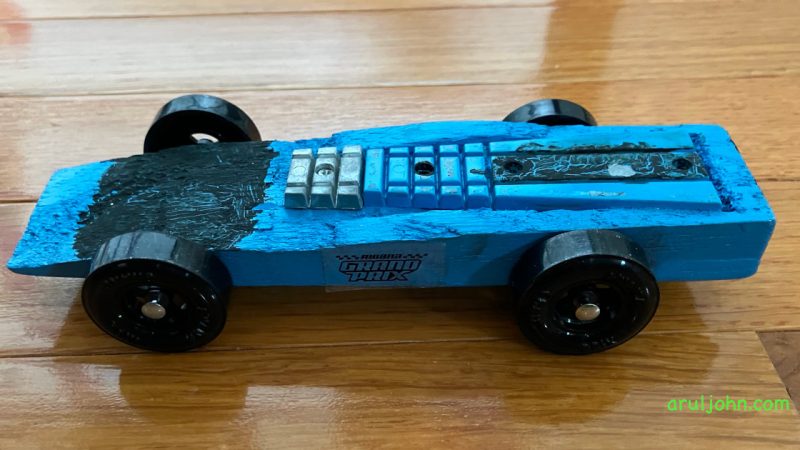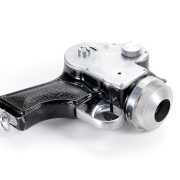Every year, thousands of Cub Scouts and hobbyists participate in pinewood derby races, where small wooden cars compete on sloped tracks. While design and craftsmanship matter, pinewood derby car weight is one of the most important factors that determine speed.
The right weight can mean the difference between first place and middle of the pack. By understanding the rules, placement strategies, and types of weights available, you can maximize performance and give your car the best chance to win.
Official Pinewood Derby Car Weight Rules
The official BSA Pinewood Derby rules set a maximum car weight of 5 ounces (141.7 grams).
- Cars must not exceed this limit at weigh-in.
- If overweight, material must be removed before racing.
- Cars under 5 ounces are allowed, but they may lose speed due to less momentum.
Pro tip: Aim to get as close to the 5-ounce limit as possible without going over. A car weighing 4.95 oz has a distinct advantage over one at 4.2 oz.
Why Pinewood Derby Car Weight Matters
The science is simple: heavier cars maintain more momentum down the track.
- Potential Energy: The higher the weight at the top of the track, the more energy it has to convert into speed.
- Momentum: A properly weighted car keeps rolling longer, even on flat sections.
- Balance: Weight placement affects stability and reduces wobble.
This is why skilled racers spend as much time adjusting pinewood derby car weight as they do on shaping and painting their cars.
Best Weight Placement Strategies
Where you put the weight matters just as much as how much you add.
Rear-Weighted Design
- Place most weight near the back of the car, just in front of the rear axle.
- Gives the car more potential energy at the start of the slope.
- Common among winners.
Center Balance
- Keeps the car stable and less prone to wobbling.
- Good for beginners who want predictable performance.
Front Balance (Not Recommended)
- Too much weight in front reduces acceleration.
- Can make cars unstable on curves.
Ideal Setup: 2/3 of the weight in the rear, 1/3 toward the middle. This balances stability with maximum speed.
Types of Pinewood Derby Car Weights
Not all weights are equal. Each type has pros and cons:
Tungsten Weights
- Most popular choice.
- Very dense—allows maximum weight in small spaces.
- Available as cylinders, cubes, or putty.
- Expensive but highly effective.
Lead Weights
- Dense and affordable.
- Easy to cut and shape.
- Caution: Lead is toxic. Always seal with glue/paint and handle safely.
Zinc Weights
- Widely available and inexpensive.
- Larger volume required to reach 5 oz (less dense than tungsten).
- Good beginner option.
Steel Weights
- Durable but less dense.
- Requires more space, limiting car design.
Recommendation: Use tungsten if budget allows, otherwise zinc or lead (with safety precautions).
How to Add Weight to a Pinewood Derby Car
Drilled Holes
- Drill holes in the bottom of the car body.
- Insert cylinder or cube weights.
- Seal with glue and wood putty.
Underbody Plates
- Flat zinc or tungsten plates mounted underneath.
- Keeps weight low to the ground for stability.
External Add-Ons
- Attach weights to the rear or top of the car.
- Riskier since they can fall off during the race.
Always check your league’s rules on external weights.
Mistakes to Avoid with Pinewood Derby Car Weight
- Exceeding 5 ounces: Automatic disqualification.
- Unstable placement: Weight falling off during race.
- Too much front weight: Slows acceleration.
- Too much rear weight: Can cause wheelies or wobbling.
- Not weighing cars before race day: Always use a precise scale to avoid surprises.
Advanced Tips for Optimizing Pinewood Derby Car Weight
- Use Tungsten Putty for Fine Tuning
Soft and moldable. Perfect for last-minute adjustments.
- Position Weights Low
Lower center of gravity improves stability.
- Use Digital Scale
Accurate to 0.01 oz for precise tuning.
- Test Different Placements
Run practice races to find the best balance.
- Combine Aerodynamics with Weight
Smooth car design + optimized weight = maximum speed.
Tools for Measuring and Adjusting Car Weight
- Digital Kitchen Scale – Ensures exact 5 oz compliance.
- Mini Drill Press – For drilling weight holes.
- Dremel Tool – Sanding and carving for micro-adjustments.
- Lead/Tungsten Putty – Quick adjustments before weigh-in.
Pinewood Derby Car Weight: Real-World Examples
- Beginner Cars: Usually weigh around 4.5 oz due to hesitation with adding too much weight.
- Intermediate Cars: Get close to 4.9 oz with zinc or lead weights.
- Winning Cars: Always hit 5.0 oz with tungsten, placed strategically in the rear.
Conclusion
Mastering pinewood derby car weight is the key to building a winning racer.
By staying under the 5-ounce limit, choosing the right weight material, and placing it strategically near the rear axle, you maximize both speed and stability.
Combine smart weight placement with good wheel alignment and aerodynamics, and you’ll have a car that’s not just legal—but fast enough to win races.
FAQs
1. What is the maximum pinewood derby car weight?
The official limit is 5 ounces (141.7 grams).
2. What is the best material for pinewood derby car weight?
Tungsten is best due to its density, though zinc and lead are more affordable.
3. Where should I place weights on my car?
Ideally near the rear axle for maximum potential energy.
4. Can I adjust car weight at weigh-in?
Yes, many racers bring putty or drill bits for last-minute adjustments.
5. Does car weight really affect speed?
Absolutely. A car close to 5 ounces will almost always perform better than a lighter one.
Also read: Game of Thrones Toys: Collectible Figures, Dragons, and More for Fans









